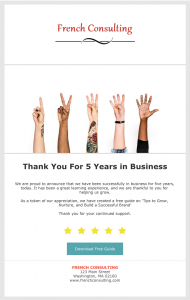Programmatic Investment Analysis Key To Solving Budget Waste
ANA puts the blame largely on brands and agencies for not assessing and managing their media investment, putting cost-cutting ahead of value for money, and being reluctant to effectively tackle media waste.
The truth is that while brands are aware of what and why this is happening, they are struggling with the costs/benefits of keeping up with the standards of brand safety that would minimize waste. Simply put, for many brands, it costs too much to manage fraud to the degree necessary, so many marketers do the bare minimum, focusing on putting out fires over getting out in front of the ever-changing problem.
ANA reports on a universal benchmark, but that doesn’t mean there are universal standards. With differing thresholds for media waste, and varied levels of willingness to pay upfront fees or invest in more expensive, quality inventory, we are likely to continue to see inconsistencies.
The need for elevated data and tech expertise
Is it realistic for ANA to expect marketers to become deep experts in efficiency and measurement? It’s a difficult question, as the programmatic space and digital platform and data optimization space has become more complex.
Marketers often manage multiple functions and therefore can’t be expected to be the specialists in every aspect of the supply chain. Many look to their agencies to negotiate with supply chain partners and provide data (cost waterfalls, etc.) to illuminate and reduce waste.
The report highlights the need for elevated data and tech expertise within both brand and agency teams. It’s clear that human talent is pivotal to tackling the issue of waste.
Advertisers who prioritize cost over value will encounter the most media waste. To invest in programmatic efficiently, brands and agencies must be comfortable with higher upfront media costs and transparent collaboration, with the expectation of higher returns on investment.
What practical steps can marketers and agencies take in light of what has surfaced in this report?
Enable an inclusion list. Instead of using exclusion lists, a more effective solution is to use inclusion lists to block sites and apps with high rates of fraud and invalid traffic. They must be highly curated, human-vetted and applied to all open auction campaigns. Inclusion lists should be updated annually at a minimum, if not dynamically, for optimal performance.
While most agencies already do this, working with a third-party verification partner will enable blocking of bids on fraudulent or invalid sites, helping manage brand safety.
Take a test-and-learn approach for supply. Collaborate with SSPs to find cost efficiencies and more direct bidding options within the auction for cleaner and more transparent buys. Looking at ads.txt or sellers.json targeting will help minimize risks. Finally, develop an ongoing SPO test-and-learn agenda.
A strong, holistic measurement approach is essential. Efforts to reduce waste should be underpinned by a strong measurement plan that can assess return on investment incrementally across different media. Advertisers who prioritize short-term outcomes will get stuck in the trap of low-CPM and low-cost traffic and are at a higher risk of media waste.
Be proactive, transparent and prepared to reevaluate. Agencies must be prepared to share data often, be transparent about media waste and partner with clients to understand where patterns of fraudulent behavior may occur so advertisers can update their approach.
(10)
Report Post






